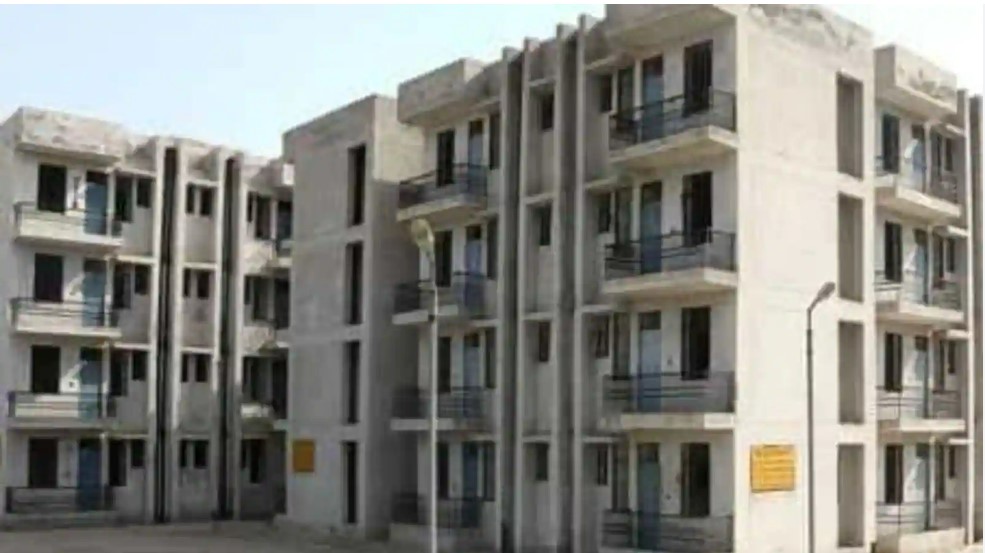India faces a pertinent and immediate problem of affordable urban housing shortage caused by various governmental interventions distorting the free market in housing. This hampers the provision of affordable housing to those who need it the most, the lower- and middle-income groups.
The article examines some perspectives on this problem and discusses three solutions.
Of India’s population of approximately 1.21 billion, 31.1% live in urban areas. Fifty-three cities in India had a million-plus population. Over 50% of the country’s population is projected to be urban by 2050.
However, because of the skewed and asymmetric urbanisation levels in India, Tamil Nadu (48.4%), Kerala (47.7%), Maharashtra (45.2%), and Gujarat (42.6%) together account for one-third of the Indian urban population. Thus, a few megacities in India face higher stress from urbanisation than others. For instance, about 19 million households grapple with a housing shortage in urban India, among many other challenges accompanying urbanisation.
The Indian housing problem in urban areas is, however, paradoxical. The stock of vacant houses is increasing but not adding to the market’s housing supply. Prices of available housing increase because of low supply and high demand. Hence, houses available for sale tend to cater to high-income groups, further inflating the prices. The lower- and middle-income groups are left without an option but to choose slums and congested housing.
Let us explore some of the causes and possible solutions.
Solution 1: Liberalising Floor Space Index (FSI) Caps
FSI prescribes the floor space ratio that can be built on a plot of land. When land is in shortage or land costs are high, FSI reduces the land cost per unit. Higher FSI enables a city to grow vertically and provide enough space for the burgeoning urban population. Caps on FSI were premised on two fallacious concepts. First, restricting FSI will limit the number of people crammed into an area. Second, infrastructure creation has to precede an increase in FSI to prevent a collapse of urban services provisioning.
However, people migrate to cities for jobs without an assurance of decent housing. With increasing demand and low supply due to FSI caps, prices have skyrocketed, slums proliferated, and infrastructure has crumbled under high stress.
World’s leading cities have a much higher FSI than Indian cities. For example, Singapore allows an FSI of 25, whereas Indian cities have much lower FSIs, including 1, 1.1, and 5 and impose height restrictions. These rules also necessitate acquiring large land parcels to build tall buildings. This further results in a city’s horizontal growth, increasing infrastructure stress.
There is another aspect to this problem. Mumbai earlier had a higher FSI, but later, caps were regressively placed on the FSI. Consequently, the older buildings, built under the higher FSI regime, are now in dilapidated conditions and urgently need redevelopment, but their owners do not have the right incentives to do so. If they are demolished, they will have to adhere to the current lower FSI rates.
Liberalising FSI caps will increase the housing supply within a given space, benefiting buyers and renters. High supply also brings down the prices, reducing the problems of urban sprawl, slums, and congested housing. City building is a dynamic process. Hence, cities must increase their infrastructure capacity to counter population growth.
Solution 2: Rationalising Rent Control Acts
Rent Control Acts place a rent ceiling and impose restrictions on evictions. Often the rent ceiling is below market prices, leading to an artificial housing shortage. Thus, rent control ironically creates a problem it was supposed to solve.
While rent and tenancy control acts protect tenants against arbitrary rent increases and evictions, a rent ceiling below market prices causes people to move into congested housing or slums. Since lower rents lead to improper maintenance of houses, it further causes hazardous living conditions.
With the shortages in such rent-controlled segments, the excess demand shifts to the noncontrolled segment (typically, new upper-bracket rental units or condominiums), which, however, has fewer houses (fearing that larger numbers might attract rent controls). High demand coupled with low supply causes price rises even in this segment, leading to a general shortage and price rise in rental housing.
Therefore, rent control has been relaxed over the years in cities like New York, especially for new buildings. Removing rent control while providing reasonable protection against arbitrary rent hikes and evictions increases the rental housing supply and incentivises landlords to maintain their rental units. This further attracts investments and stabilises the rents across the housing market. Thus, the invisible hand of the free market will create a spontaneous order out of chaos.
Solution 3: Rationalise and Reduce the Bureaucratic Steps in Acquiring Building Permits and Approvals, and Fasten the Process
Another problem engulfing the housing development industry is the time taken due to the bureaucratic hassles in acquiring building permits and approvals. Many states have diluted their RERA rules, thus defeating the entire purpose of strengthening the real estate sector. While the costs of acquiring permits may not be exorbitant, the delays by various government departments affect the entire project cost, including interest, opportunity, and redesign costs. Often the laws are confusing and disincentivise new entrants.
The builders, in turn, will have to pass on this increased cost to the consumers. Therefore, they cater to the high-income population who can afford high-priced accommodations, creating a shortage of affordable housing.
Single window clearance with simple and easy processes is the solution. Take away control from the government departments and put the onus on the developers to adhere to the guidelines. While the Real Estate Regulatory Authority (RERA) Act penalises developers for delays in project deliveries, it does not hold government departments accountable for delays. They should have to bear penalties for undue delays. Technology can play a vital and enabling role in bringing transparency, neutrality and simplicity to this entire process.
The three solutions discussed in this article are not exhaustive. However, they are an attempt to allow free market forces to work their magic efficaciously. We have had too many restrictions for a long time, distorting the markets, even if our intentions were good. As is often said, the road to hell is paved with good intentions. We need to revisit our ideas and think from the first principles to ensure affordable housing does not remain a dream.
Read more: A Critical Insight into the Right to Education Act
Post Disclaimer
The opinions expressed in this essay are those of the authors. They do not purport to reflect the opinions or views of CCS.






